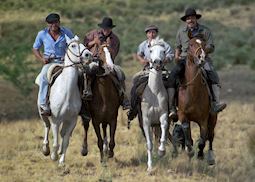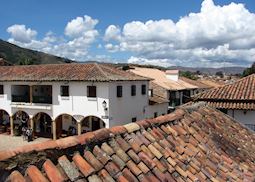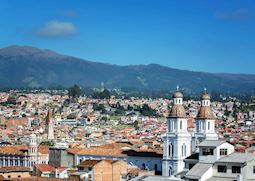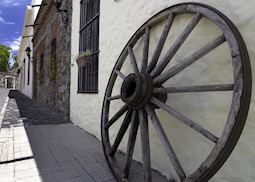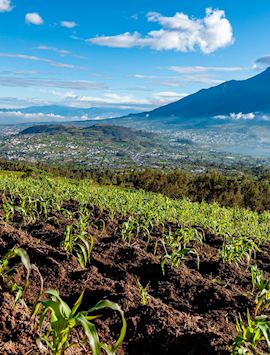
Its landmass encompasses everything from Andean cordilleras to Earth’s largest tropical rainforest and Patagonian ice fields, but South America’s riches aren’t merely topographical. Historically, it’s a layering of pre-Columbian and conquistador influences, shaped more recently by modern political fortunes. Our specialists — many of whom are Spanish and Portuguese speakers — can show you how to see the headline grabbers, such as Machu Picchu, and beyond on a bespoke South America tour.
They can recommend less-hyped experiences for your South America holiday, which offer a window into the food, dance and traditions of the continent’s native, European and African cultures. Indeed, many of our specialists draw on their time living in South America to help you experience it as fully as possible, whether your interests lie in a Galapagos expedition cruise or sampling the finest Argentinian vintages.
who's been there
-
01993 838 92501993 838 650
- Make an enquiry
Trip ideas in South America
These itineraries will give you a starting point for what your trip could entail. They cover routes that we've found work particularly well and feature some of our favourite places to stay. Treat them just as inspiration, as each trip is created uniquely for you and there are many more options available.
Our expert guides to exploring South America
Capturing our specialists’ extensive travel experience in South America, these guides share inspiration, recommendations and our honest advice for how to enjoy the best of what the region can offer in the most authentic ways. From the wealth of options we describe, you can narrow down the choices and start to shape your own trip.
-
What to do in Patagonia: our highlights guide ![Snow-capped mountains in Parque Patagonia, Aysén]()
What to do in Patagonia: our highlights guide
What to do in Patagonia: our highlights guide
Patagonia stretches across both Chile and Argentina, and down to the frozen waters of the Southern Ocean. Latin America specialist, Ann, selects her top things to do when visiting this vast region.
Read this guide -
My perfect trip: Machu Picchu and the Sacred Valley remixed ![Trekking on the Inca Trail near Machu Picchu]()
My perfect trip: Machu Picchu and the Sacred Valley remixed
My perfect trip: Machu Picchu and the Sacred Valley remixed
Audley Peru specialist Lauren explains how to experience Cuzco, Machu Picchu and the Sacred Valley more intimately, away from the crowds.
Read this guide -
Self-driving holidays in Chile & Argentina ![The road to Lago General Carrera, Aysén]()
Self-driving holidays in Chile & Argentina
Self-driving holidays in Chile & Argentina
A self-drive trip through Chile or Argentina is ideal for those looking for the flexibility to go where they want, when they want. Our specialists will advise on the routes to take as well as the best places to see and the accommodation you should stay in.
Read this guide -
Machu Picchu plus one: tried-and-tested South American combinations ![Machu Picchu, Peru]()
Machu Picchu plus one: tried-and-tested South American combinations
Machu Picchu plus one: tried-and-tested South American combinations
Did you know that thanks to ever-improving flight connections, you can easily combine Machu Picchu with other South American destinations such as the Galapagos and Argentina — without the need to extend your trip drastically? Our specialists explain how.
Read this guide




